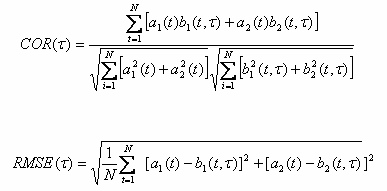|
HOME > Climate & Weather Linkage > US CLIVAR MJO Index Forecast Comparisons
|
US CLIVAR MJO Working Group
Forecast Metrics
|
*** Please Note: This website is under construction and will see considerable modifications and upgrades over time as additional models become available, alternative methodologies evaluated and verification statistics generated. The products at this site are to be considered experimental at the current time. ***
|
|
|
|
|
PLEASE NOTE: The model forecast data for the ECMWF two week and extended ensemble prediction systems are currently unavailable. We are working to correct the issue and we apologize for the inconvenience this current outage of these products causes.
|
|
A key for the label headings in the figure box is provided below. Click on the headings for larger size images and specific model-related information.
|
| |
|
Note: Move cursor over product name to display. Click for larger size and info.
|
|
|
|
|
|
Heading Key:
NCPO: National Centers for Environmental Prediction - Operational Global Forecast System
NCPE: National Centers for Environmental Prediction - Ensemble Global Forecast System
NCFS: National Centers for Environmental Prediction - Climate Forecast System
UKMA: United Kingdom Meteorology Office - Operational Control Run
UKME: United Kingdom Meteorology Office - Ensemble System
ECMF: European Centre for Medium Range Weather Forecasting - Ensemble System
BOMA: Australian Bureau of Meteorology - Global Analysis and Prediction Control Run
BOME: Australian Bureau of Meteorology - Global Analysis and Prediction Ensemble System
BOMC: Australian Bureau of Meteorology - POAMA Coupled System
CMET: Canadian Meteorology Centre - Ensemble System
CPTC: Brazil Center for Weather and Climate Studies - Ensemble System
JMAN: Japan Meteorology Agency - Global Spectral Model Ensemble System
|
|
[Back to the Top]
|
- Model Comparison Methodology Specifics
|
|
The methodology for the creation of the phase space plots above follows closely to that described in Wheeler and Hendon (2004) (hereafter WH2004). A notable difference between WH2004 and the procedure employed here is that the linear removal of the ENSO signal (related by the BMRC SST1 index) is not performed. After discussion among the MJOWG members, it was decided that this step was not necessary as the subsequent removal of the 120-day mean is sufficient to remove much of the interannual signal.
|
| |
|
The table below summarizes the data requested by the MJOWG for the operational centers. For additional details regarding the data and methodology, see the document link below the table. This document includes background information and motivation for this activity along with directions for interested operational centers who wish to participate in this project.
|
| |
| Fields |
OLR, u850, and u200 totals (anomaly fields optional)
Initial analysis, forecasts of all ensemble members, out to no more than 40 days
|
| Resolution |
2.5 in longitude (0, 2.5E. 5.0E, Daily averaged (00-24Z)) |
| Update Frequency |
Daily, or less for those systems run at a reduced frequency
Additional data during initial transfer (i.e., send analysis data for past 120 days)
|
| Format |
ASCII |
|
| |
|
Further Information -- Working Group on Numerical experimentation (WGNE) Letter
|
| |
|
[Back to the Top]
|
| |
|
|
The US CLIVAR MJO Working Group plans to verify these forecasts in realtime using the bivariate correlation and root-mean-square error between the observed and forecasted RMM indices as described by Lin et al. (2008). See below for expressions and an example.
 *** Please Note: Images below are examples at the current time. Realtime versions of equivalent or similar figures are expected n the future ***
*** Please Note: Images below are examples at the current time. Realtime versions of equivalent or similar figures are expected n the future ***
|
| |
|
Note: Move cursor over product name to display. Click for larger size and info.
|
|
|
|
|
|
| |
|
[Back to the Top]
|
| |
|
|
|
Wheeler M. and H. Hendon, 2004: An All-Season Real-Time Multivariate MJO Index: Development of an Index for Monitoring and Prediction, Monthly Weather Review, 132, 1917-1932.
|
|
Gottschalck, J., M. Wheeler, K. Weickmann, D. Waliser, K. Sperber, F. Vitart, N. Savage, H. Lin, H. Hendon, M. Faltau, 2008: Madden-Julian Oscillation Forecasting at Operational Modelling Centres. CLIVAR Exchanges, 13, October 2008.
|
|
Goswami, B.N., Wheeler, M. C., Gottschalck, J. C. and Waliser, D.E., 2008: Intraseasonal Variability and Forecasting:
A Review of Recent Research. The Fourth International Workshop on Monsoons, IWM-IV, 20-26 October 2008, Beijing, China.
|
|
Lin, H., G. Brunet, and J. Derome, 2008: Forecast skill of the Madden-Julian Oscillation in two Canadian atmospheric models. Mon. Wea. Rev., 136, 4130-4149.
|
|
[Back to the Top]
|


